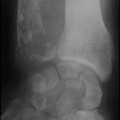Precursor Lymphoid Neoplasms |
▪ |
B lymphoblastic leukemia/lymphoma NOS |
▪ |
B lymphoblastic leukemia/lymphoma with recurrent genetic abnormalities |
|
▪ |
t(9:22)(q34;q11.2); BCR-ABL1 |
|
▪ |
t(v;11q23); MLL rearranged |
|
▪ |
t(12:21)(p13;q22); TEL-AML1 (ETV6-RUNX1) |
|
▪ |
With hyperdiploidy |
|
▪ |
With hypodiploidy |
|
▪ |
t(5:14)(q31;q32); IL3-IGH |
|
▪ |
t(1:19)(q23;p13.3); E2A-PBX1(TCF3-PBX1) |
▪ |
T lymphoblastic leukemia/lymphoma |
Mature B-Cell Neoplasms |
▪ |
SLL/CLL |
▪ |
B-cell prolymphocytic leukemia |
▪ |
Splenic B-cell MZL |
▪ |
Hairy cell leukemia |
▪ |
Splenic B-cell lymphoma/leukemia, unclassifiable |
|
▪ |
Splenic diffuse red pulp small B-cell lymphoma |
|
▪ |
Hairy cell leukemia-variant |
▪ |
Lymphoplasmacytic lymphoma |
▪ |
Heavy-chain diseases |
|
▪ |
Gamma heavy-chain disease |
|
▪ |
Mu heavy-chain disease |
|
▪ |
Alpha heavy-chain disease |
▪ |
Plasma cell neoplasms |
|
▪ |
Monoclonal gammopathy of undetermined significance |
|
▪ |
Plasma cell myeloma |
|
▪ |
Solitary plasmacytoma of bone |
|
▪ |
Extraosseous plasmacytoma |
|
▪ |
Monoclonal immunoglobulin deposition diseases |
▪ |
Extranodal marginal zone B-cell lymphoma of MALT |
▪ |
Nodal marginal zone B-cell lymphoma |
▪ |
FL |
▪ |
Primary cutaneous follicle center lymphoma |
▪ |
Mantle cell lymphoma |
▪ |
DLBCL, NOS |
|
▪ |
T-cell/histiocyte-rich large B-cell lymphoma |
|
▪ |
Primary DLBCL of the CNS |
|
▪ |
Primary cutaneous DLBCL, leg type |
|
▪ |
EBV-positive DLBCL of the elderly |
▪ |
DLBCL associated with chronic inflammation |
▪ |
Lymphomatoid granulomatosis |
▪ |
Primary mediastinal (thymic) large B-cell lymphoma |
▪ |
Intravascular large B-cell lymphoma |
▪ |
ALK+ large B-cell lymphoma |
▪ |
Plasmablastic lymphoma |
▪ |
Large B-cell lymphoma arising in HHV8-associated multicentric Castleman disease |
▪ |
Primary effusion lymphoma |
▪ |
BL |
▪ |
B-cell lymphoma, unclassifiable, with features intermediate between DLBCL and BL |
▪ |
B-cell lymphoma, unclassifiable, with features intermediate between DLBCL and classical Hodgkin lymphoma |
Mature T- and NK-Cell Neoplasms |
▪ |
T-cell prolymphocytic leukemia |
▪ |
T-cell large granular lymphocyte leukemia |
▪ |
Chronic lymphoproliferative disorder of NK cells |
▪ |
Aggressive NK-cell leukemia |
▪ |
EBV-positive T-cell lymphoproliferative diseases of childhood |
|
▪ |
Systemic EBV+ T-cell lymphoproliferative disease of childhood |
|
▪ |
Hydroa vacciniforme-like lymphoma |
▪ |
Adult T-cell lymphoma/leukemia |
▪ |
Extranodal NK-/T-cell lymphoma nasal type |
▪ |
Enteropathy-associated T-cell lymphoma |
▪ |
Hepatosplenic T-cell lymphoma |
▪ |
Subcutaneous panniculitis-like T-cell lymphoma |
▪ |
Mycosis fungoides (CTCL) |
▪ |
Sézary syndrome |
▪ |
Primary cutaneous CD30-positive T-cell lymphoproliferative disorders |
▪ |
Primary cutaneous PTCLs, rare subtypes |
|
▪ |
Primary cutaneous gamma-delta T-cell lymphoma |
|
▪ |
Primary cutaneous CD8-positive aggressive epidermotropic cytotoxic T-cell lymphoma |
|
▪ |
Primary cutaneous CD4-positive small/medium T-cell lymphoma |
▪ |
PTCL-NOS |
▪ |
Angioimmunoblastic T-cell lymphoma |
▪ |
Anaplastic large-cell lymphoma, ALK+ |
▪ |
Anaplastic large-cell lymphoma, ALK– |
Immunodeficiency-Associated Lymphoproliferative Disorders |
▪ |
Lymphoproliferative diseases associated with primary immune disorders |
▪ |
Lymphomas associated with HIV infection |
▪ |
PTLD |
|
▪ |
Plasmacytic hyperplasia and infectious-mononucleosis-like PTLD |
|
▪ |
Polymorphic PTLD |
|
▪ |
Monomorphic PTLD |
|
▪ |
Classical Hodgkin lymphoma-type PTLD |
▪ |
Other iatrogenic immunodeficiency-associated lymphoproliferative disorders |
BL, Burkitt lymphoma; CLL, chronic lymphocytic leukemia; CNS, central nervous system; CTCL, cutaneous T-cell lymphomas; DLBCL, diffuse large B-cell lymphoma; EBV, Epstein-Barr virus; FL, follicular lymphoma; HHV8, human herpesvirus 8; HIV, human immunodeficiency virus; MZL, marginal zone lymphoma; NK, natural killer; NOS, not otherwise specified; PTCL, peripheral T-cell lymphomas; PTLD, posttransplant lymphoproliferative disorder; SLL, small lymphocytic lymphoma; WHO, World Health Organization. |





